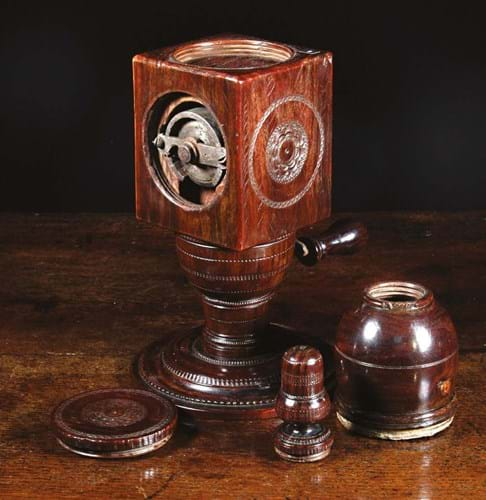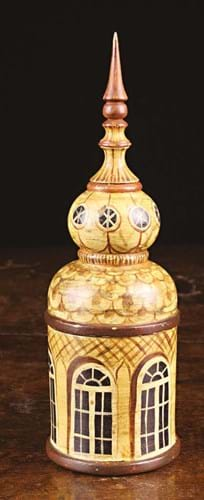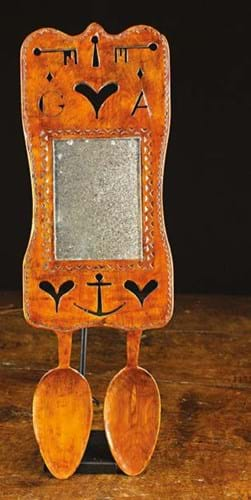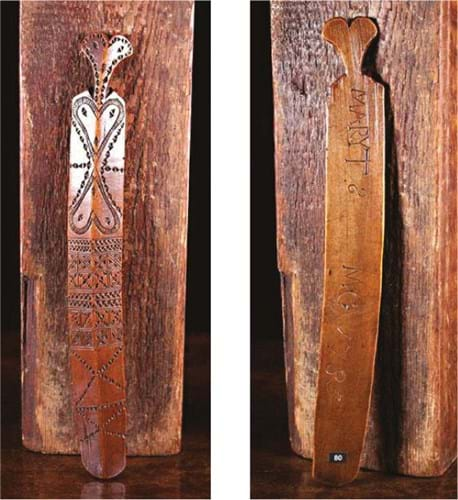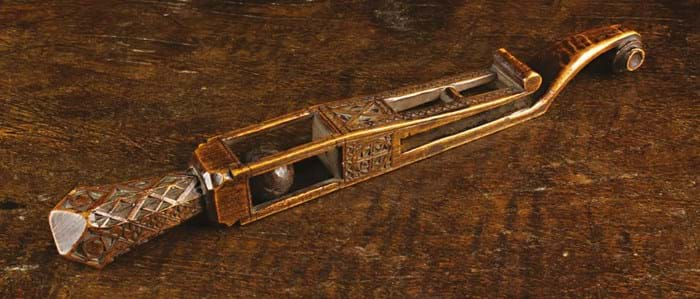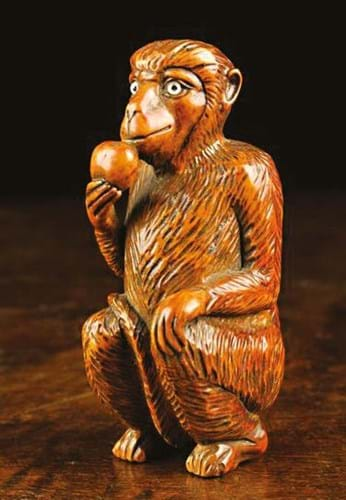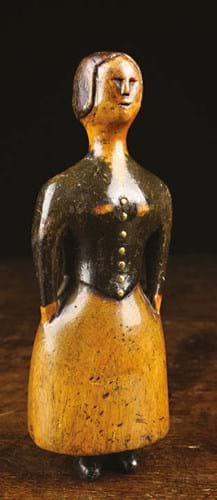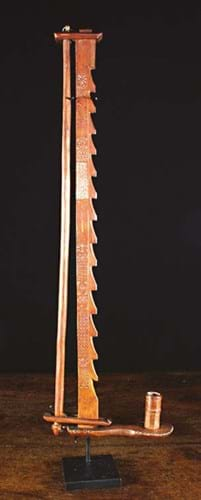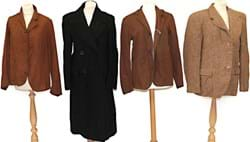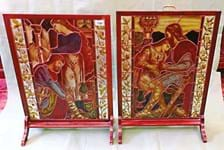Like other niche collecting fields, treen has some immunity to devastating swings of fashion and when a good group comes to market the enthusiasm and the money are much in evidence.
This was the case when Wilkinson’s (20% buyer’s premium) opened its tri-annual period oak furniture sale with 209 treen lots from the collection of Graham Cutts, a well-known Norfolk enthusiast who is diversifying his collection.
His material included some 30 18th-19th century metal or bone items, among which was the one failure, a pair of 18th century steel tongs. Everything else sold and generally well above expectations.
“The collection really captured people’s imagination,” said auctioneer Matt Gibson after the February 27-28 Doncaster sale. “It had some of highest prices we’ve ever seen for treen, as well as some of the highest prices seen by some of the avid collectors.”
Estimated to fetch £50,000- 80,000, it totalled £163,000. Most items went to private UK buyers against interest from the trade and collectors bidding from the US, the Far East and Europe.
Most areas of modest domestic life of centuries past were covered.
Full of beans
Topping the collection was a 14in (37cm) high 17th century English lignum vitae coffee mill. With typical engine-turned decoration, it was a complete example in fine condition and went to a private buyer at £6300 against a £300-500 estimate.
Staying with the catering, the best of four biscuit moulds was an early 19th century folk art example, a 7¼ x 4in (18.5 x 10 cm) fruitwood block naively carved as a seated cat to the front and an indecorous depiction of its rear to the rear. It took a 10-times estimate £3200. Another mould with a chip-carved elephant improved similarly bringing £1900.
Going to America was a 19th century turned and painted spice box in the form of Brighton Pavilion – the type of ‘whitewood’ wares associated with Tunbridge Wells. The 8in (20cm) tall box was estimated at a lowly £100-200 but sold at £1700 – the sort of sum seen for others in recent years.
Love spoons carved by swains for their sweethearts are a Welsh tradition but one that spread to other areas. The best example at Doncaster was probably a sailor’s work, the base being pierced with a central anchor (signifying steadfastness). Made in fruitwood and an impressive 14½in (37cm) tall, it was inset to the top with a mirror featured a heart flanked by the initials GA. It took a quadruple-estimate £3200.
Similar, if rather more intimate, love tokens, were stay busks. Usually made of whalebone (a baleen scrimshaw example in the Cutts Collection trebled expectations at £1700), these torturous corset stiffeners also came in wood.
One such at Doncaster was a 12½in (32cm) sycamore busk with bifoil finial and apexed front featuring hearts and geometric chip carving, the back inscribed Mary T S Mg 1785. It sold above estimate at £950.
Knitting sheaths, essentially tools to allow people to continue knitting while walking or standing, were widely used in the 17th and 18th centuries when home knitting of hose was an industry providing employment for thousands in the north.
No fewer than 36 featured in the Cutts offering, including a ‘ball & cage’ fruitwood example. The 8½in (21.5 cm) long chip-carved sheath with ‘violin’ scroll terminal bore scratch-carved initials MC and date 1777, and quadrupled hopes at £1900.
Major draw
The 55 snuff boxes in a wide variety of woods and depicting a wide range of subjects were a major draw.
A 19th century boxwood example carved as a 4¼in (11cm) high squatting monkey eating an apple opened the sale and set the pace. Pitched at £500-750, it sold at £2500.
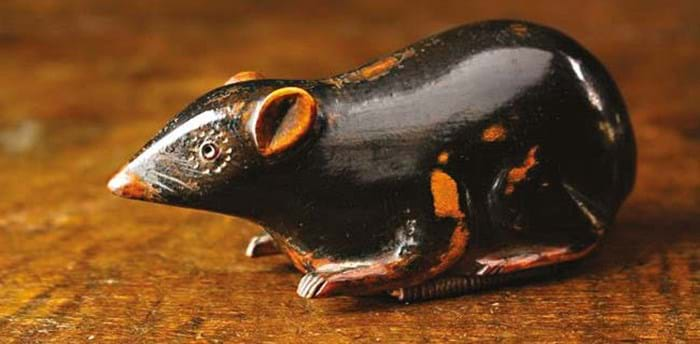
Fruitwood black rat snuff box – £3100 at Wilkinson's.
Going well above the estimate of £800-1200, a 4½in (11 cm) long 19th century fruitwood box in the form of a black rat sold at £3100.
An effortlessly folksy early 19th century box was naively carved as a lady whose skirt was hinged at the back to form the lid. Standing 5½in (14cm) tall with painted hair and brass buttons to her jacket, she was estimated at £1000-1200 and sold to a US collector at £4900, more than four times the top estimate.
Also going to America way above expectations was a rare 18th century fruitwood pendant candlelight, hanging on a height adjustable ratchet intricately decorated with chip-carved panels of chip and scratched depictions of birds on trees. A documentary piece, inscribed Robard Hearn Feby 04 1773, it sold at £4300, more than 10 times the mid estimate.
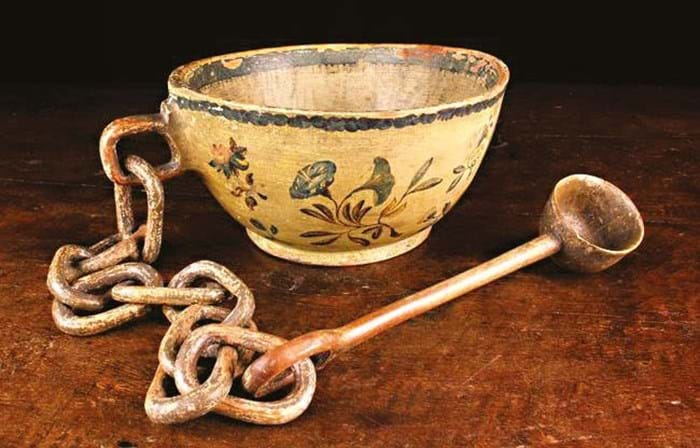
Sycamore punch bowl and ladle – £4800 at Wilkinson's.
Toast of a selection of drinking vessels was an 8¼in (21cm) diameter punch bowl with ladle linked by a chain all carved from a single sycamore block. The exterior of the 18th century piece was decorated in the chinoiserie style of porcelain bowls of the age, the interior a shade less social climbing, being inscribed with the drunkard’s motto One more bowl and then… Estimated at £400- 600, it sold at £4800.
A suitable companion was an early 18th century sycamore or fruitwood goblet. Turned on a pole lathe and carved to the concave underside of the foot with the initials SI, the 4½in (11cm) high vessel went more than five times above the top estimate, selling at £2100.


